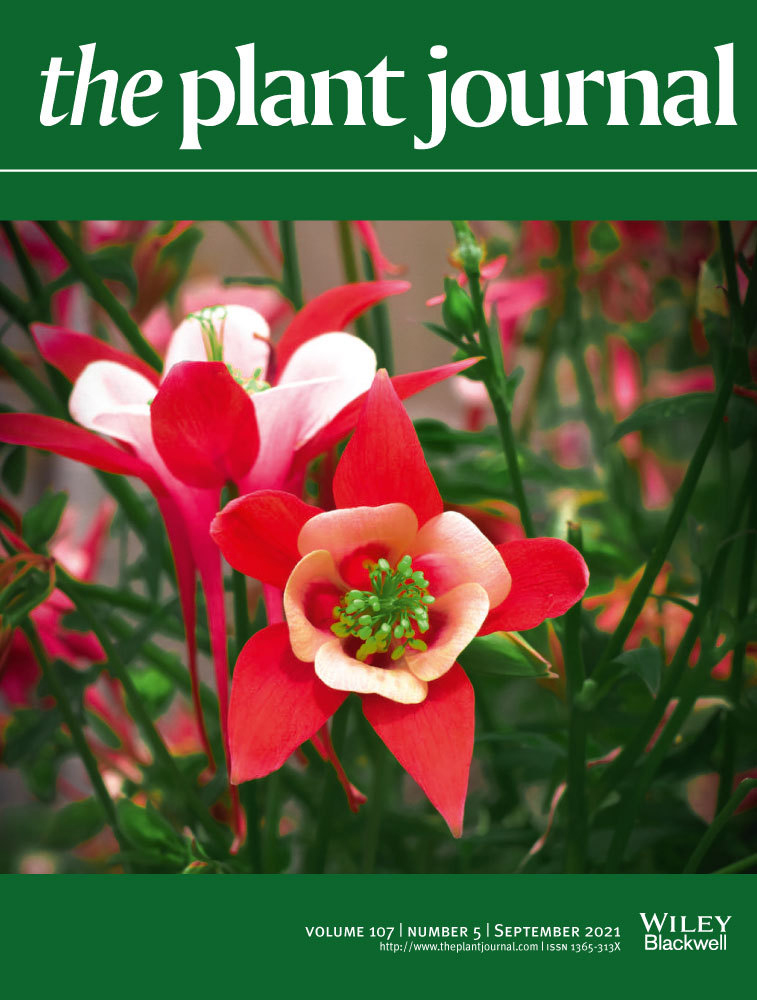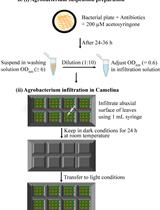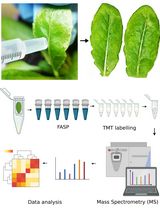- EN - English
- CN - 中文
Application of Cadaverine to Inhibit Biotin Biosynthesis in Plants
尸胺在抑制植物生物素合成中的应用
发布: 2022年04月20日第12卷第8期 DOI: 10.21769/BioProtoc.4389 浏览次数: 2265
评审: Wenrong HeYuan WangYe Xu
Abstract
Biotin is an essential vitamin in plants. However, characterization of biotin deficiency has been limited by embryo lethality in mutants, which can only be rescued by supplementation of biotin. Here, we describe a protocol to characterize biotin deficiency in Arabidopsis thaliana through application of the polyamine cadaverine. Cadaverine induces changes in primary root growth. Protein biotinylation in Arabidopsis seedlings can be quantified through an assay similar to a western blot, in which protein biotinylation is detected by a streptavidin probe. This technique provides a chemical means of inhibiting biotin synthesis, allowing for further characterization of biotin deficiency on a physiological and molecular level.
Keywords: Cadaverine (尸胺)Background
Polyamines, like cadaverine, are small organic compounds with functions in the development and environmental sensing processes in plants (reviewed in Jancewicz et al., 2016). Previous studies have shown an effect of cadaverine on root growth architecture, through inhibition of primary root growth, increased lateral root branching, altered root skewing, and root waving (Strohm et al., 2015). To identify the molecular mechanism of cadaverine response, a forward genetic screen was carried out on Arabidopsis seedlings, which identified a mutation in the biotin synthesis gene BIO3-BIO1 leading to a short-root, cadaverine-hypersensitive response (Gibbs et al., 2021). From this study, we learned that cadaverine is able to inhibit biotin synthesis through interference with BIO3-BIO1 enzymatic function. Biotin is a necessary vitamin that is required for gluconeogenesis, amino acid homeostasis, and de novo fatty acid biosynthesis (Alban and Douce, 2000). The decrease in biotin derived from cadaverine treatment yields a deficit in the biotinylation of acetyl-CoA carboxylase (ACCase) component of biotin carboxyl carrier protein 1 (BCCP1), resulting in decreased fatty acid production. The depletion of biotin also results in cell death, within both shoot and root tissues (Li et al., 2012; Gibbs et al., 2021). Using cadaverine, we can deplete the amount of biotin within seedlings, which is a useful way to characterize the physiological role played by biotin deficiency. Biotin depletion in plant tissue can be confirmed through analysis of biotinylation of proteins using a streptavidin probe (Figure 1) (Wurtele and Nikolau, 1990; Guan et al., 1999; Che et al., 2003; Li et al., 2012). Streptavidin can detect at least three biotin-containing proteins: ACCase components BCCP1 and BCCP2, and methylcrotonoyl-CoA carboxylase (MCCA).
Materials and Reagents
225 mL flask
Stir bars
100 mm square Petri plates (Midwest Science, catalog number: PD115)
Filter paper (Whatman, catalog number: WHA1001055)
Seal-Rite 1.5 mL microcentrifuge tube, natural, sterile (USA Sci, catalog number: 1615-5510)
2 mL microfuge tubes (USA Scientific, catalog number: NC9558509)
4.5 mm steel beads (Daisy 40 BBS, 4000 CT, 0.177 Caliber, Zinc-Plated Steel, 4.5 mm)
Micropore tape (3M, Fisher Scientific, catalog number: 19-061-655)
Imminobilon-FL PVDF membrane (Merck Millipore Ltd., catalog number: IPFL00010)
3M blocking paper (Fisher Scientific, catalog number: 05-716-3T)
Arabidopsis thaliana seeds (Col-0 background, ABRC)
Linsmaier and Skoog (LS) basal salts with buffer and sucrose (Caisson Labs, catalog number: LSP04-1LT)
Agar (Fisher BioReagents, 800-199 Mesh, catalog number: BP26411),
Cadaverine dihydrochloride (Sigma-Aldrich, catalog number: 22330-10F)
Biotin (Sigma-Aldrich, catalog number: B4639)
95% Ethanol (Pharmco, catalog number: 111000190)
Liquid nitrogen
Pierce BCA Protein Assay Kit (Thermo Scientific, catalog number: 23225)
NuPAGE LSD Sample Buffer (4×) (Invitrogen, catalog number: NP0007)
NuPAGE Novex 12% Bis-Tris Gel, 1.0 mm, 10 well (Invitrogen, catalog number: NP0321BOX)
NuPAGE MOPS SDS BUFFER 20×, 500 mL (Invitrogen, catalog number: NP0001)
Color Prestained Protein Standard, Broad Range (11-245 kDa) (New England Biolabs, catalog number: P7719)
NuPAGE Transfer buffer (1 L) (Invitrogen, catalog number: NP0006)
NuPage antioxidant (Invitrogen, catalog number: NP0005)
Blocking buffer (LI-COR, catalog number: 927-600001)
BCCP1 antibody (Generated by Basil Nikolau’s lab, Plant Antibody Facility, Ohio State)
MCCA antibody (Generated by Basil Nikolau’s lab, Plant Antibody Facility, Ohio State)
RPT4A antibody (Provided by Richard Vierstra's lab, University of Wisconsin-Madison, currently Washington University, St Louis, MO)
IRDye 800CW Streptavidin (VWR, catalog number: 102673-342)
Protein extraction buffer (see Recipes)
20× TBS solution (see Recipes)
TBST (see Recipes)
Streptavidin dye solution (see Recipes)
Equipment
Plant growth chamber (Conviron TC30 or equivalent)
Milli-Q water system (MilliQ Plus PF)
Stir plate (Fisher Scientific)
Oven (Lab Line, model: 403)
Document scanner with 300+ DPI resolution (Epson Perfection, model: V33)
Mixmill (Reisch, model: MM200)
X-cell SureLock Mini-Cell Electrophoresis system (Invitrogen, model: EI0001)
Power block (BioRad, model: 200/2.0)
Electrophoresis power supply (Amersham Pharmacia Biotech, model: EPS 601)
Centrifuge (Eppendorf, model: 5424)
Autoclave (AMSCO, model: 3021-S)
Shaker/rotator (Bellco Biotech, model: 7744-01010)
Imaging system (LI-COR Odyssey)
Software
ImageJ (National Institutes of Health, https://imagej.nih.gov/ij/download.html)
Image Studio (LI-COR, https://www.licor.com/bio/image-studio)
Procedure
文章信息
版权信息
© 2022 The Authors; exclusive licensee Bio-protocol LLC.
如何引用
Gibbs, N. M., Su, S. H. and Masson, P. H. (2022). Application of Cadaverine to Inhibit Biotin Biosynthesis in Plants. Bio-protocol 12(8): e4389. DOI: 10.21769/BioProtoc.4389.
分类
植物科学 > 植物分子生物学 > 蛋白质
分子生物学 > 蛋白质 > 表达
您对这篇实验方法有问题吗?
在此处发布您的问题,我们将邀请本文作者来回答。同时,我们会将您的问题发布到Bio-protocol Exchange,以便寻求社区成员的帮助。
Share
Bluesky
X
Copy link













